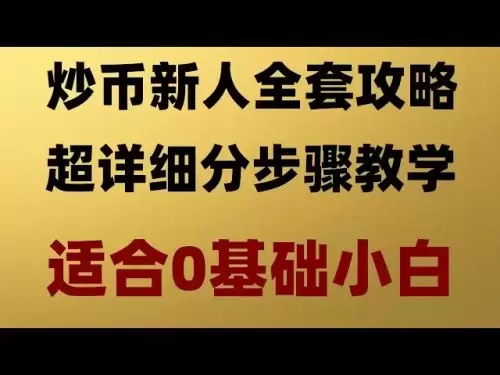 |
|
 |
|
 |
|
 |
|
 |
|
 |
|
 |
|
 |
|
 |
|
 |
|
 |
|
 |
|
 |
|
 |
|
 |
|
Cryptocurrency News Articles
USD1, a new stablecoin, was minted on the TRON blockchain by World Liberty Financial (WLFI)
Jun 12, 2025 at 05:54 pm
TRON is already well-known due to Tether (USDT). Now, this blockchain serves as the foundation for a new initiative aimed at providing users with fast crypto transactions.

World Liberty Financial (WLFI), a company partly owned by the Trump family, has minted a new stablecoin, USD1, on the TRON blockchain. The token was launched on June 11, 2025. TRON is already well-known due to Tether (USDT), and now this blockchain is hosting a new initiative aimed at providing users with fast crypto transactions. However, many questions arise regarding both the stability of USD1 and the legal and political aspects involved.
What is USD1?
USD1 is a stablecoin pegged to the U.S. dollar at a 1:1 ratio. It is backed by U.S. Treasury bonds and other cash equivalents, although questions about the mechanisms of its backing remain unresolved.
The launch of this token is of great significance, as it is a stablecoin created with the political backing of U.S. President Donald Trump's family. Given the political support, the project raises important questions about conflicts of interest and possible violations of the U.S. Constitution. In particular, the Emoluments Clause — part of the U.S. Constitution that prohibits government officials from receiving financial benefits from foreign governments or private individuals during the performance of their duties — is a key topic of discussion.
The importance of TRON for USD1
The choice of TRON as the platform for launching USD1 has its advantages. The TRON blockchain has long been used to support Tether (USDT), one of the largest stablecoins on the market, due to its low fees and fast transactions. Therefore, using this platform for USD1 allows for lower transaction costs and makes the token accessible to a wider audience.
However, it is indispensable to understand that TRON is regularly criticized for its lack of transparency and centralized governance, which increases the risks for the USD1 project in terms of stability and user trust.
Trump’s political backing
However, USD1 is not just another stablecoin on the TRON blockchain. The Trump family’s ownership of 60% of WLFI shares creates a potential conflict of interest. Given that Trump and his family remain influential figures on the U.S. political stage, there is a risk that this stablecoin could be used for the family's financial gain or to influence political processes.
This context raises questions about external influence on the U.S. economy and politics, especially if foreign governments or companies start investing in USD1. It casts doubt on the transparency and neutrality of the project, already sparking discussions among politicians and experts.
Backed reserves and regulation issues
In addition to the political aspects, USD1 faces other challenges related to its reserves and regulation. Unpublished details about the reserve mechanisms and backing may lead to trust issues among users. The lack of reporting and auditing leaves questions about the stability of this token, which could impact its acceptance as a reliable instrument.
For USD1 to become a successful and stable stablecoin, the project will need to overcome regulatory hurdles, ensure full transparency, and meet security and stability standards to avoid legal complications.
Conclusion
The launch of USD1 is a significant event for TRON and the cryptocurrency market as a whole. However, its success will depend on how the project addresses issues of transparency, backing, and regulation. The stablecoin space is under increased scrutiny from both U.S. and global authorities. For USD1 to gain widespread adoption, the transparency of its reserve backing, emission policy, and legal compliance will be crucial.
Another issue arises regarding interoperability. Will USD1 remain exclusive to TRON, or will it expand to Ethereum, BNB Chain, and other networks? Inter-network liquidity could be a key factor in its success.
However, if WLFI can overcome these challenges and ensure transparency in all matters, this stablecoin has the potential to become an important tool for users on the TRON platform and within the decentralized finance ecosystem.
Disclaimer:info@kdj.com
The information provided is not trading advice. kdj.com does not assume any responsibility for any investments made based on the information provided in this article. Cryptocurrencies are highly volatile and it is highly recommended that you invest with caution after thorough research!
If you believe that the content used on this website infringes your copyright, please contact us immediately (info@kdj.com) and we will delete it promptly.
-

- Ethereum (ETH) Whales Scoop Up $50M of the Dip, Igniting Breakout Expectations Above $3,250
- Jun 16, 2025 at 02:35 am
- This massive accumulation underscores the growing market confidence in Ethereum as it dominates the decentralized application (dApp) space and continues to integrate AI-driven solutions
-

-

-

-

- Research from Standard Chartered Bank shows a marked exodus from spot gold exchange-traded funds (ETFs) to bitcoin ETFs.
- Jun 16, 2025 at 02:25 am
- Geoffrey Kendrick, head of digital assets research at the bank, circulated a report on Monday forecasting a “fresh all-time high” for bitcoin at $120K by the summer
-

-

-

-




























































